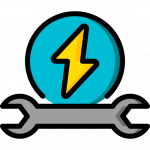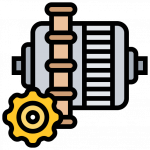FAQ

What are safety concerns with alternating current?
Alternating current can be dangerous if not used properly. For example, touching a live wire carrying AC can result in electrocution. AC can cause interference in electronic devices, which can lead to data loss or corruption. Read more..
What is direct current used for?
Some common applications of direct current include:
1. powering electronic devices
2. charging batteries
3. operating electric motors
4. welding metals
Read more..
What is direct current?
Direct current (DC) is an electric current that flows in one direction only. DC is the kind of current produced by batteries, fuel cells, and solar panels. Read more..

What is an AC motor?
An AC motor is an electric motor that uses alternating current (AC) instead of direct current (DC). AC motors are more efficient than DC motors and can be found in a variety of applications, including fans, pumps, and compressors. Read more..
How does and AC motor work?
An AC motor works by using electromagnetism to convert electrical energy into mechanical energy. The alternating current creates a rotating magnetic field that interacts with the armature, or rotor, of the motor to create torque. Read more..
What are the benefits of AC motors?
AC motors are more efficient than DC motors and can operate at higher speeds. Additionally, AC motors are less likely to overheat than DC motors and can be used in a variety of applications. Read more..

How to identify a broken light switch?
The first step in knowing how to fix a broken light switch is being able to identify when one exists. There are a few telltale signs that a light switch may be broken, which include:
-The switch does not click when engaged.
-The switch feels loose or wobbly.
–Read more..
How does an AFCI work?
AFCIs work by sensing when an arc fault is about to occur and then interrupting the flow of electricity before the arc can form. Read more..
What is an arc fault circuit interrupter (AFCI)?
An AFCI is a type of circuit breaker that is designed to protect against electrical fires caused by arcing faults. Read more..